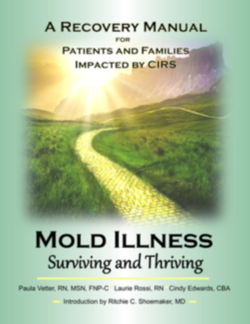NeuroQuant Links Mold Illness to Structural Change in Brain
A common concern for those who are trying to understand cognitive problems in moldy patients is to answer how is it that inflammation in the body is inflammation in the brain. The blood brain barrier, as it is called, results from additional "tight junction features" between cells that line blood vessels. These tight junctions are loosened by particular inflammatory processes including TGF beta-1 and IL-1B. These two compounds are well shown to be significantly elevated in patients with systemic inflammatory response syndromes acquired following exposure to the interior environment of water-damaged buildings.
The computer program called NeuroQuant has been used in the traumatic brain injury field for some years. This unique and sophisticated program can take a properly run MRI of the brain and assess volumes of 15 different brain areas. To my knowledge, no one had used NQ to assess brain injury in patients with mold illness before.
Based on preliminary results; one of the "fathers of NQ" has shown a unique fingerprint of changes in white matter volume as well as injury to a gray matter structure, the caudate nucleus.
These preliminary data are being verified and expanded, but the longstanding tenuous argument against the link of exposure to water-damaged buildings leading to development of adverse cognitive effects appears to be ready to disappear under a blizzard of hard data. We are developing a before and after therapy protocol for such patients.
Below are several videos and information from the Virginia Institute of Neuropsychiatry:
You may visit their site for more information by clicking here.
Featured Resources
Common Questions & Answers about Cholestyramine (and why it’s the most effective option out there).
Cholestyramine (CSM) is an FDA-approved medication used in an initial stage of The Shoemaker Protocol because it has a unique affinity for binding with biotoxins and effectively eliminating them from the body.
*NEW FEATURED ARTICLE * Actinobacteria Update: The revolutionary findings on biotoxin illness further explained.
Based on newer, published and confirmed information and testing, we’ve been able to expand the concept of specific causation of "mold illness" or CIRS to include indoor-dwelling Actinobacteria
A Physician’s Guide to Use of Actinobacteria Indices
In the newest report from EnviroBiomics, Actinomycetales, also called Actinobacteria, are now reported with an additional factor called an Actino Index. We look at a Dominance Index (DI) and a Prevalence Index (PI) to assist physicians in making clinical de...
New Research Article!
Treatable metabolic and inflammatory abnormalities in Post COVID Syndrome (PCS) define the transcriptomic basis for persistent symptoms: Lessons from CIRS
Newer Molecular Methods Bring New Insights into Human- And BuildingHealth Risk Assessments from Water-Damaged Buildings: Defining Exposure and Reactivity, the Two Sides of Causation of CIRS-WDB Illness
Scientific disciplines dependent on accurate analytics invariably evolve due to advances in technical aspects of measurement. In disciplines in which adequate measurement is not available for applications to public health policy, the impact of new paradigms...




